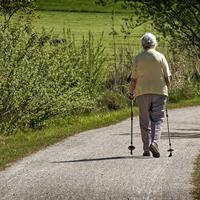In February Age UK published an Index of Wellbeing in Later Life. Anyone interested in composite indicators should have a look at it. The introduction to the summary report on the Index acknowledges that it has proved very difficult for researchers to come up with a way of measuring wellbeing for older people that is satisfactory (i.e. captures “the most important domains of life”) and useable. Part of the difficulty has been that different researchers have focussed on different parts of the idea that are fine as far as they go, but they do not “measure wellbeing in the round”. They do not bring together what are generally recognised to be different components in wellbeing so as to construct a “single and coherent measure”. This is what the Index of Wellbeing in Later Life sets out to do.
One very important feature of the index is its age-specificity. In this respect it follows the approach adopted by Gwyther Rees and Jonathan Bradshaw in their Index of Child Wellbeing. It is not possible, therefore, to use the index to compare the wellbeing of people at different stages of life. Unlike the Index of Wellbeing in Later Life, however, the Index of Child Wellbeing is explicitly presented as a measure of subjective wellbeing. It eschews objective measures like poverty rates in order to “focus on young people’s assessment of their life as a whole their assessments of satisfaction with life as a whole and with particular aspects of their lives”. In other words, it combines measures like ‘satisfaction with schooling’, ‘satisfaction with personal relationships’, ‘perceptions of safety’ etc. This decision to concentrate solely on subjective well-being and at the same time to incorporate multiple domains into the assessment was the key to the novelty and value of the Index. The Index of Wellbeing in Later Life, on the other hand, makes it clear that it is combining measures of subjective wellbeing with objective measures of wellbeing. The key to its novelty and value is its inclusiveness. Instead of presenting a ‘rounded’ view of subjective wellbeing, it presents a ‘rounded’ view of wellbeing. There are, however, disadvantages to this approach, and in particular, a loss of some of the clarity of rationale that underpins the inclusion of different indicators in the Index of Child Wellbeing. The fact that they all tell us something about what children think or how they feel about different aspects of their life means that overall scores are relatively easy to interpret. It also means researchers can ask about the extent to which variations in Index scores reflect variations in objective measures of the conditions in which children live. The Index of Wellbeing in Later Life, on the other hand, has been constructed in a way that precludes this kind of analysis, since so many of the relevant objective measures of living conditions have been incorporated into the Index (e.g. marital status, financial resources, health etc.).
The Methodology Report which accompanies the Index of Wellbeing in Later Life acknowledges that it has taken a rather looser approach to the selection of indicators.
“While academic debate will continue about how ‘wellbeing’ should be defined, for our purposes it is not essential to address all of its finer points. We have chosen to make use of a notion of wellbeing which points to a state in which an individual or group is financially comfortable, healthy and engaged in meaningful activities. It points to a stock of personal, familial, and community resources that help individuals cope well when things go wrong. Wellbeing therefore encapsulates how we are faring, in all domains of life, including financial resources, health, social, personal and the local environment”.
Another feature that the Index of Wellbeing in Later Life shares with Index of Child Being is that it can be (and has been) used to assign overall wellbeing scores to individuals within populations. This may sound obvious, but it is nonetheless worth being explicit about the point, since many well-known composite indicators - such the Human Development Index – start from aggregated data that applies to whole populations, life expectancy or GDP per capita. The HDI was designed to compare different populations. The results for the Index of Wellbeing in Later Life, on the other hand, consist of a distribution of wellbeing scores within a population (the UK), and in this case the sample is provided by Understanding Society, the UK’s Household Longitudinal Survey (Bradhsaw and colleagues used its predecessor, the BHPS).
A final point. There is a close affinity between the methodology used to construct the Index and that used in the Active Ageing Index. Final scores for all individual indicators are represented as percentages, and these are calculated by normalising each indicator into a unit-free variable between 0 and 100.
.bmp)
This means that the average population scores for any given domain can be compared to an observed maximum (represented as 100), and the Index refers to the difference between as a ‘wellbeing gap’. The average overall wellbeing score for the UK is 53.2%, and it turns out that this wellbeing gap is largest in the health domain and smallest in what the Index calls the ‘personal’ domain.
One of the most important features of an Index like this one is that it is not immediately obvious how we should understand statements about the different relative contributions that indicators or domains make to the overall score. Perhaps the main point to bear in mind is this: the results do not describe any kind of causal relationship between (i) an outcome - wellbeing - that is conceptualised independently of any the factors that might affect it, and (ii) a set of factors that can be understood as the main ‘determinants’ of wellbeing. To take one of the headline example from the results, the fact that participation in creative and cultural activities emerges as the indicator with the largest relative contribution to the overall score has to be interpreted with some care. It does not mean that this is the most important ‘determinant’ of wellbeing in later life.
About the Author:
Kenneth Howse is a Senior Research Fellow at the Oxford Institute of Population Ageing. He is also a key member of The Collen Programme on Fertility, Education and the Environment.
Comments Welcome:
We welcome your comments on this or any of the Institute's blog posts. Please feel free to email comments to be posted on your behalf to administrator@ageing.ox.ac.uk or use the Disqus facility linked below.
Opinions of the blogger is their own and not endorsed by the Institute
Comments Welcome: We welcome your comments on this or any of the Institute's blog posts. Please feel free to email comments to be posted on your behalf to administrator@ageing.ox.ac.uk or use the Disqus facility linked below.













